Best Friends for Frances. Russell Hoban. Illustrated by Lillian Hoban. 1969/1994. HarperCollins. 32 pages. [Source: Library]
First sentence: It was a fine summer morning, so Frances took out her bat and ball. "Will you play ball with me?" said her little sister, Gloria. "No," said Frances. "You are too little." Gloria sat down and cried. Frances walked over to her friend Albert's house, singing a song: Sisters that are much too small To throw or catch or bat a ball Are really not much good at all, Except for crying.
Premise/plot: It was easy for Frances to dismiss Gloria as an unworthy playmate, but when Albert (and later Harold) dismiss Frances, well, Frances learns that sometimes a sister can be a friend--a best friend. It's summer and Frances loves to play with her friends. One day Albert rejects Frances because it's his "wandering" day. And the next day, Albert and Harold reject Frances because she's a girl, and girls can't play baseball as well as boys. But Frances is not to be stopped. Even if it means playing with her little sister, she'll show Albert what is what! If Albert wants a no-girls-allowed club, then she'll start a no-boys-allowed club.
"Do you want to play ball?"
"All right," said Gloria.
"If any boys come, they can't play," said Frances, "and I think I will be your friend now."
"How can a sister be a friend?" said Gloria.
"You'll see," said Frances.
"For frogs and ball and dolls?"
"Yes," said Frances.
"And will you show me how to print my name?" said Gloria.
"Yes," said Frances.
"Then you will be my best friend," said Gloria. "Will it just be today, or longer?"
"Longer," said Frances. (20-21)
My thoughts: I do like this one. But Frances isn't always nice in this one. Then again neither is Albert. Or Harold. The only one that is nice all the time is Gloria.
Text: 3 out of 5
Illustrations: 4 out of 5
Total: 7 out of 10
© 2016 Becky Laney of
Becky's Book Reviews
I Can Lick 30 Tigers Today And Other Stories. Dr. Seuss. 1969. HarperCollins. 64 pages. [Source: Library]
First sentence of I Can Lick 30 Tigers Today:
I can lick thirty tigers today! Well... Maybe twenty-nine. You! Down there! With the curly hair. Will you please step out of the line. I can lick twenty-nine tigers today...Premise/plot: Another Seuss title about boasting. The narrator of this one boasts that he can 'lick' thirty tigers? Can he actually lick even one? Probably not. The illustrations reveal just how intimidated he becomes as the tigers come closer and closer. It's not so easy to keep a big ego when you're face to face with a couple of tigers!
My thoughts: I liked this one fine. How does it compare to
The Big Brag or
Scrambled Eggs Super other Seuss stories with bragging or boasting? I probably like this one more.
First sentence of King Looie Katz:
Way back in the olden, golden days (In the Year One Thirty-Nine) A fancy cat named Looie Was the King of Katzen-stein. King Looie was a proud cat, Mighty proud of his royal tail. He had it washed every morning in a ten-gallen golden pail.Premise/plot: This story is so silly and oh-so-predictable. Looie has to have someone start carrying his tail, and then his tail-carrier has to have someone carry his tail, and then his tail-carrier has to have someone carry his tail, and on and on it goes. It's a relief when one cat says NO and stops the nonsense.
My thoughts: I wasn't a big fan of this story. But it was okay.
First sentence of The Glunk That Got Thunk:
A thing my sister likes to do Some evenings after supper, Is sit upstairs in her small room And use her Thinker-Upper. She turns her Thinker-Upper on. She lets it softly purr. It thinks up friendly little things With smiles and fuzzy fur. Premise/plot: The sister gets in BIG, BIG trouble when her Thinker-Upper thinks up a Glunk. This Glunk is TROUBLE and then some. She really tries to un-think him, but, she learns you can't unthunk a glunk.
My thoughts: I liked this story the best of the three. It was silly and over-the-top, but I really liked it.
Have you read I Can Lick 30 Tigers Today! And Other Stories? Did you like it? love it? hate it? I'd love to know what you thought of it!
If you'd like to join me in reading or rereading Dr. Seuss (chronologically) I'd love to have you join me! The next book I'll be reviewing is Mr. Brown Can Moo.
© 2015 Becky Laney of
Becky's Book Reviews
The School for Cats. Esther Averill. 1947/2005. New York Review Children's Collection. 32 pages. [Source: Library] The School for Cats was originally published in 1947. It is part of a larger series of books starring the (black) cat Jenny Linsky and her friends. The School of Cats is not the first in the series, but, it is the first in the series that my library actually had. In this "Jenny's Cat Club" book, readers meet Jenny as she leaves her home in Greenwich Village to attend school in the country. She is very, very, very unsure about the whole school thing. But her master, Captain Tinker, wants her "to study cat lore in the country." There is definitely something of an adventure in this one when Jenny runs away from school. But it also contains a lesson on friendship and adapting to new situations.
I enjoyed this one. I look forward to reading others in the series.
Jenny's Moonlight Adventure. Esther Averill. 1949/2005. New York Review Children's Collection. 32 pages. [Source: Library]Jenny's Moonlight Adventure was originally published in 1949. It is part of a larger series of books starring Jenny and her friends. I did not like this book as well as The School for Cats. It is a Halloween adventure. Jenny must prove how brave she is both for herself and for her friends. She reluctantly accepts a job that only she can do. She is to carry a nose flute to a sick friend (another cat, of course). The job is "dangerous" because it requires her to be brave and clever enough to get past several unfriendly neighborhood dogs.
For readers who celebrate Halloween, this one might prove charming.
Jenny Goes to Sea. Esther Averill. 1957/2005. New York Review Children's Collection. 140 pages. [Source: Library]Of the Jenny Linsky books I've read so far, Jenny Goes to Sea is probably my favorite. In this chapter book originally published in 1957, Jenny Linsky and her two brothers, Edward and Checkers, travel the world with their owner, Captain Tinker. These three cats become very good friends with Jack Tar, the ship's cat. These three leave the ship in company with Jack Tar at many of the ports including Capetown, Zanzibar, Singapore, and Bangkok. Adventures come oh-so-naturally.
I definitely recommend this series to cat lovers of all ages.
Jenny and the Cat Club: A Collection of Favorite Stories About Jenny Linsky. Esther Averill. 1973/2003. New York Review Children's Collection. 176 pages. [Source: Library]Jenny and the Cat Club features five stories by Esther Averill. These were originally published in 1944, 1948, 1951, 1952, and 1953. The stories are: "The Cat Club," "Jenny's First Party," "When Jenny Lost Her Scarf," "Jenny's Adopted Brothers," and "How the Brothers Joined the Cat Club."
The Cat Club introduces readers to Jenny Linsky, a "shy little black cat" from New York City. Readers meet Jenny and her owner Captain Tinker. In this adventure, Jenny receives her signature red scarf, a present from her owner who happens to knit. This red scarf helps Jenny gain enough confidence to talk to other cats in the neighborhood. In this one, readers learn about the neighborhood cat club, they are briefly introduced to the other cats, and they learn that members of the cat club must be special.
Jenny's First Party is a story focusing on Jenny and her friend Pickles (the fire cat) teaming up and strolling the neighborhood. Both are looking for fun, fun, fun. But neither have money. (What cat has money?!) They stumble upon a groovy party and a great time is had by all. Readers learn that Jenny can dance a happy little sailor's hornpipe dance.
"When Jenny Loses Her Scarf" is about when Jenny's beloved red scarf was stolen by a dog. The dog, Rob the Robber, refuses to give it back. Jenny seeks help from Pickles the fire cat. Pickles is just the one to help her, it turns out, for justice is dealt out after all. The dog's hangout catches on fire! Pickles retrieves the scarf as he's putting out the fire.
"Jenny's Adopted Brothers" is about when Jenny meets two stray cats: Checkers and Edward. Checkers, readers learn, retrieves things. Edward, we learn, is a poet. Jenny meets these two, feels sorry for them, and introduces them to Captain Tinker. When these two are adopted by the Captain, Jenny feels very jealous! Will having two other cats in the house prove too much?!
"How The Brothers Joined the Cat Club" is obviously about when Edward and Checkers join the club. Jenny is hesitant to include her two new brothers at first. After all, she likes the idea that the club could remain her own little secret and her way to get away from them. But. Being the good little cat that she is, Jenny soon realizes that she could never really keep her brothers from missing out on the awesomeness of the cat club. She helps them discover their talents and introduces them to all her friends.
I liked this one. I did. I like meeting Jenny and the other cats.
The Hotel Cat. Esther Averill. 1969/2005. New York Review Children's Collection. 180 pages. [Source: Library]The Hotel Cat is an enjoyable children's novel by Esther Averill. It was originally published in 1969.
The Hotel Cat stars a cat named Tom. He lives at the Royal Hotel, an eight-story building in New York. It is on the older side. And the hotel isn't doing the best business. But all that happens to change during the novel. Tom who is used to having the place to himself, for the most part, at least in terms of CATS ON THE PLACE discovers that there are cats there with their owners. The first few cats he meets he is rude, very rude. But after Tom's owner, Mrs. Wilkins, talks to him, he decides to be more gracious and welcoming. It isn't long before he meets three cats: Jenny, Edward, and Checkers. And those aren't the only cats from the cat club he happens to meet. A difficult winter has resulted in a lot of broken boilers and frustrated cat-owning homeowners are staying at the Royal Hotel. How convenient!
Tom learns a lot about making and keeping friends in The Hotel Cat.
I liked this one.
Captains of the City Streets. Esther Averill. 1972/2005. New York Review Children's Collection. 164 pages. [Source: Library] Captains of the City Streets is a children's novel by Esther Averill originally published in 1972. Two cats star in Captains of the City Street. In this one, the author provides the back story for two cats who have been a part of essentially the whole series. Sinbad and The Duke. These two stray cats are best buddies. They haven't been "owned" by a human in what seems like a very long time by cat reckoning. They are street cats, traveling cats, going from city to city to city, seeing all there is to see, always seeking handouts, but never becoming dependent on any one human. The two travel to "old New York." They are looking for a place of their own, a safe place to stay. They find it. They also find one old man who dependably gives them food day after day on their own terms. He comes and goes leaving the food, never trying to approach the cats, never pushing a relationship. The two cats slowly but surely decide that maybe just maybe humans aren't all that bad. That is when they stumble upon the Cat Club. They learn that the kind human is Captain Tinker. The first cat they befriend is Macaroni. The two are invited to join the Cat Club, but, are hesitant. Do they want to stick around that long? Do they want the responsibility?
I liked meeting Sinbad and Duke. The stories that focus on Jenny certainly mention these two quite a bit, but, this is the first time that readers really learn about these two in detail. It is a fun book.
Jenny's Birthday Book. Esther Averill. 1954/2005. New York Review Children's Collection. 44 pages. [Source: Library] Jenny's Birthday Book by Esther Averill was originally published in 1954. In this cat club book, Jenny Linsky, our star cat, our shy little black cat with the red scarf, has a special birthday with all of her friends whom we've met through the series. Pickles. Sinbad and The Duke. Florio. To name just a few. It is a lovely birthday. The book itself is sweet, simple, and charming. Especially if you like cats and vintage picture books. I think my favorite illustration is of all the cats dancing the Sailor's Hornpipe in the park.
The Fire Cat. Esther Averill. 1960/1983. HarperCollins. 64 pages. [Source: Own] I enjoyed revisiting The Fire Cat by Esther Averill. I read this one many times as a child. But I had no idea it was part of a larger series of books, the Cat Club series by Esther Averill. The Fire Cat does not star Jenny Linsky. It stars Pickles. Pickles has been a delightful character in almost all of the other books in the series. He is probably one of Jenny's best best friends. In the Fire Cat, readers learn more about Pickles. Was he always a fire cat? Of course not! There was a time he was a hopeless cat that was a little bit bad and a little bit good. One of the firemen takes an interest in him and takes him to the fire station. He is hoping that the chief will allow Pickles to stay. Pickles most definitely wants to stay. He wants to prove himself worthy, so he decides to learn by example. He learns to slide down the pole, for example, he learns how to work a hose. The fire chief is definitely charmed, I imagine cat-loving readers are just as charmed. I certainly was! The Fire Cat is a feel-good read. Readers see Pickles transform from a slightly-naughty homeless cat to a brave and dutiful fire cat. He learns responsibility and compassion. Overall, it's just a good story.
© 2014 Becky Laney of
Becky's Book Reviews
The Star Trek Reader. Twenty-one Novelized Episodes Based on the Exciting Television Series Created by Gene Roddenberry. James Blish. 1968, 1969, 1972. Dutton. 372 pages.
This is the first volume in the book series of adaptations by James Blish. It contains three books, "Star Trek 2," "Star Trek 3," and "Star Trek 8." It was a great introduction to Blish's work. It features stories like, "The Trouble with Tribbles," "The City on the Edge of Forever," "Friday's Child," "Tomorrow is Yesterday," etc.
What surprised me is that I found myself liking the short story adaptations even when I didn't particularly remember liking the episode it was based on. (Though Spock's Brain didn't exactly improve.)
For anyone who loves the characters, the stories, the friendships, the themes of Star Trek The Original Series, this is a MUST. I enjoyed it very much. There is definitely something comforting and satisfying about it. I definitely want to reread it!
Read The Star Trek Reader
- If you enjoy vintage science fiction
- If you enjoy Star Trek The Original Series
- If you enjoy short stories
© 2012 Becky Laney of
Becky's Book Reviews
Best Friends for Frances. Russell Hoban. Illustrated by Lillian Hoban. 1969/1994. HarperCollins. 32 pages.
It was a fine summer morning, so Frances took out her bat and ball. "Will you play ball with me?" said her little sister, Gloria. "No," said Frances. "You are too little." Gloria sat down and cried. Frances walked over to her friend Albert's house, singing a song: Sisters that are much too small
To throw or catch or bat a ball
Are really not much good at all,
Except for crying.
It was easy for Frances to dismiss Gloria as an unworthy playmate, but when Albert (and later Harold) dismiss Frances, well, Frances learns that sometimes a sister can be a friend--a best friend. It's summer and Frances loves to play with her friends. One day Albert rejects Frances because it's his "wandering" day. And the next day, Albert and Harold reject Frances because she's a girl, and girls can't play baseball as well as boys. But Frances is not to be stopped. Even if it means playing with her little sister, she'll show Albert what is what! If Albert wants a no-girls-allowed club, then she'll start a no-boys-allowed club.
"Do you want to play ball?"
"All right," said Gloria.
"If any boys come, they can't play," said Frances, "and I think I will be your friend now."
"How can a sister be a friend?" said Gloria.
"You'll see," said Frances.
"For frogs and ball and dolls?"
"Yes," said Frances.
"And will you show me how to print my name?" said Gloria.
"Yes," said Frances.
"Then you will be my best friend," said Gloria. "Will it just be today, or longer?"
"Longer," said Frances. (20-21)
I do like this one. But Frances isn't always nice in this one. Then again neither is Albert. Or Harold. The only one that is nice all the time is Gloria.
© 2011 Becky Laney of
Young Readers
 Who are Tara and Mike? Think of Ebert and Roeper–but discussing children’s books instead of movies. This week we’re giving two bookmarks up to Neil Armstrong is My Uncle & Other Lies Muscle Man McGinty Told Me by Nan Marino (Roaring Brook Press, May 2009).
Who are Tara and Mike? Think of Ebert and Roeper–but discussing children’s books instead of movies. This week we’re giving two bookmarks up to Neil Armstrong is My Uncle & Other Lies Muscle Man McGinty Told Me by Nan Marino (Roaring Brook Press, May 2009).
“Muscle Man McGinty is a squirrelly runt, a lying snake, and a pitiful excuse for a ten-year old. The problem is…only I can see him for what he really is.”
Tara: So Mike, what attracted you to Neil Armstrong is My Uncle?
Mike Jung: Well, Tara, it was partly the cover (the moon, it’s a very evocative image), partly Nan being a Blueboarder and seeming like a decent sort, and partly the title, which really spoke to me somehow—I instantly felt like there was a story right there in the title. Why’d you read it?
Tara: The title especially drew me in. Even though it mentions the first man on the moon, I didn’t realize the story took place during the summer of 1969, so I was pleasantly surprised. I became immersed in the summers of my childhood, anticipating the arrival of the ice cream truck, just like the kids on Ramble Street.
Before I read it, I imagined Muscle Man McGinty was some sideshow freak at a local carnival. I’m glad he turned out to be a scrawny ten-year-old instead.
Mike: Ha! I was caught off-guard by the time period too. 1969 was the veeeeeery beginning of my time (I was born in the summer of ‘69) so it didn’t trigger any memories, but I thought the setting was so vivid, and so lovingly created, that I was immersed in it right away. And I had the same thought about Muscle Man McGinty! I also loved the character he turned out to be—so much sadness, courage, generosity and patience rolled up in one runty little kid.
Tara: Uh, maybe I shouldn’t have dated myself like that. 1969 was before my time, but still, if you remove the historical backdrop—Vietnam and the lunar landing—the story has a timeless feel. It felt like 1979 in my neighborhood, but it could easily take place in 2009, although the kids would be wearing bike helmets and the adults would be talking about Afghanistan and flying cars. If we had flying cars, that is.
What about the novel hooked you?
Mike: I was hooked by more than one thing—the setting, as I mentioned, was superb—but it was the characters that really grabbed me, especially Tammy. I love the voice of Tammy. She’s an incredibly genuine, multi-faceted, fully-realized character. In my eyes, one of the ways to create a successful protagonist is to put all their flaws on glaring, unmistakable display, but still make them sympathetic and understandable. Tammy often comes across as self-involved, oblivious and sullen in all the normal 10-year-old ways—she’s not some kind of villain, but she’s also not super-cuddly and lovable. I loved her anyway.
Tara: Confession: I didn’t love Tammy all the way through the novel. But I loved that I didn’t love her. I can’t recall the last time I felt such conflicting emotion over a main character. I rooted for her, even though I didn’t necessarily agree with her actions. The narration was brilliant because it revealed Tamara’s world so slowly, making you trust her implicitly at first, but toward the end you realized she could be h
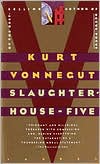
Vonnegut, Kurt. 1969. Slaughterhouse-Five. Delacorte Press. 205 pages.
All this happened, more or less. The war parts, anyway, are pretty much true. (first sentence chapter one)
Listen:
Billy Pilgrim has become unstuck in time. (first sentence of chapter two)
How would I describe this one? Weird but in a mostly good way. It's an odd little novel--to be sure--what with Billy Pilgrim's voyaging in and out of time. The brief moments here and there that the reader gets glimpses of. Shuffled memories of a hard life. We spend a lot of time with Billy during the war--World War II for those that may not be familiar with this one. He was a prisoner of war. He was a survivor of the Dresden bombings. If the "time travel" doesn't weird you out, perhaps his kidnapping by aliens will. You'll learn a lot about Tralfamadore along the way. But it is an almost always compelling read, one that was hard to put down.
Here are a few of my favorite passages:
The time would not pass. Somebody was playing with the clocks, and not only with the electric clocks, but the wind-up kind, too. The second hand on my watch would twitch once, and a year would pass, and then it would twitch again. There was nothing I could do about it. As an Earthling, I had to believe whatever clocks said---and calendars. (19)
The most important thing I learned on Tralfamadore was that when a person dies he only appears to die. He is still very much alive in the past, so it is very silly for people to cry at his funeral. All moments, past, present, and future, always have existed, always will exist. The Tralfamadorians can look at all the different moments just the way we can look at a stretch of the Rocky Mountains, for instance. They can see how permanent all the moments are, and they can look at any moment that interests them. It is just an illusion we have here on Earth that one moment follows another one, like beads on a string, and that once a moment is gone it is gone forever.
When a Tralfamadorian sees a corpse, all he thinks is that the dead person is in bad condition in that particular moment, but that the same person is just fine in plenty of other moments. Now, when I myself hear that somebody is dead, I simply shrug and say what the Tralfamadorians say about dead people, which is "So it goes." (25-26)
Because this one focuses a lot on war, we hear "so it goes" a lot. I don't know that this one is for everyone. But I enjoyed it. It was more fractured narrative than what I'm used to, yet I still found a compelling story.
© Becky Laney of
Becky's Book Reviews

Perkins, Al. 1969. Hand, Hand, Fingers, Thumb. Illustrated by Eric Gurney. Random House.
There is only one book--from my childhood--that stands a chance of topping Hand, Hand, Fingers, Thumb as my favorite, favorite, favorite picture book*. I just love Hand, Hand, Fingers, Thumb. I do. Are you familiar with this one? It's a "Bright and Early Book for Beginning Readers." Yes, it sports the Cat in the Hat in the top corner on the cover.
What do I love about Hand, Hand, Fingers, Thumb? What don't I love! The monkeys. The drums. The refrains. The rhythm of it all. I love both the illustrations and the text. Both are oh-so-magical for me. It begins off simply with one little monkey,
Hand
Hand
Fingers
Thumb
One thumb
One thumb
Drumming on a drum.
One hand
Two hands
Drumming on a drum.
Dum ditty
Dum ditty
Dum dum dum.

But one little monkey isn't quite enough, soon these monkeys start getting together--like Jack and Jake--and eventually there are millions of monkeys....
Hand in hand
More monkeys come.
Many more fingers.
Many more thumbs.
Many more monkeys.
Many more drums.
Millions of fingers!
Millions of thumbs!
Millions of monkeys
Drumming on drums!
The text lends itself to easy memorization--it is fun, it is catchy, it is practically perfect in every way.
*Note, I said
my childhood. I've read plenty of picture books as an adult. I can't really compare the experiences. There are two different kinds of love.
© Becky Laney of Becky's Book Reviews
.jpg?picon=993)
By: Cynthia Reeg,
on 3/6/2008
Blog:
What's New
(
Login to Add to MyJacketFlap)
JacketFlap tags:
COM`,
Add a tag

One of my favorite poems (by Lewis Carroll) JABBORWOCKY has earned a spot on the list with ultra-cool illustrations by Christopher Meyers. In Meyers' version of the poem, the Jabborwock brings his intimidating battle to the basketball court. What a clever, updated look at all the "galumphing" and "burbling." This book is truly "frabjous."
Congrats to both Marla and Sara!



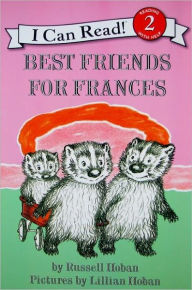
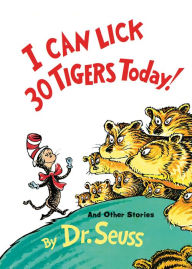
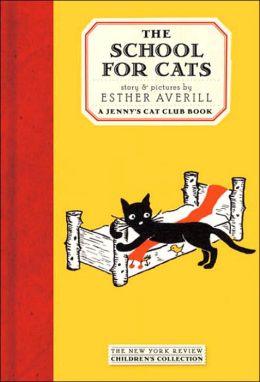
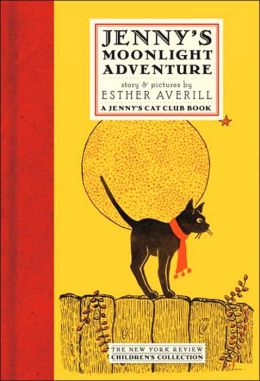

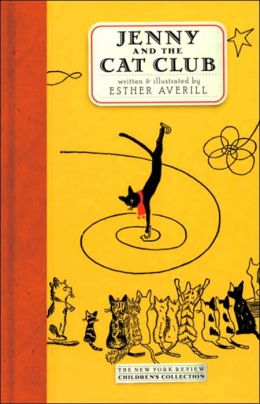
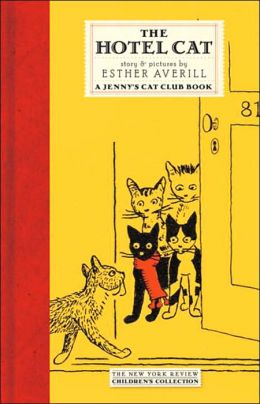

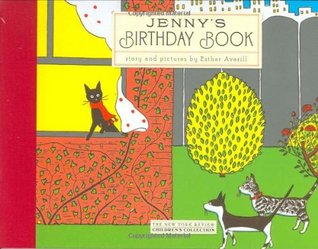








I've tried to go back and watch episodes on Netflix, and I just can't. It was great when I was a kid (so was Buck Rogers!), but I can't watch it anymore. But in print I could see it working.